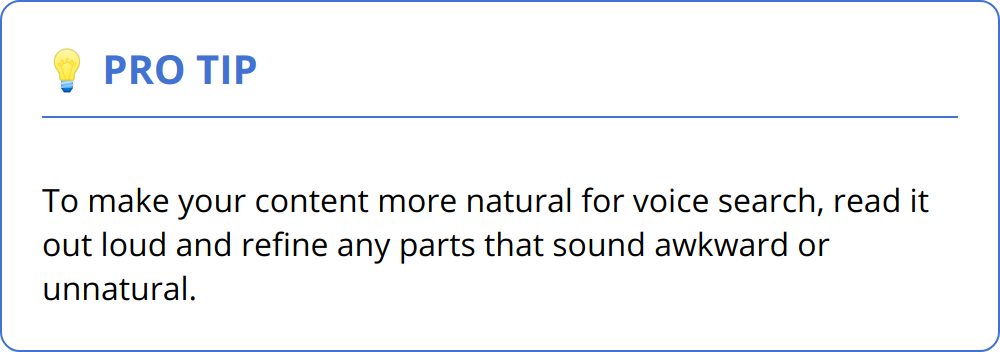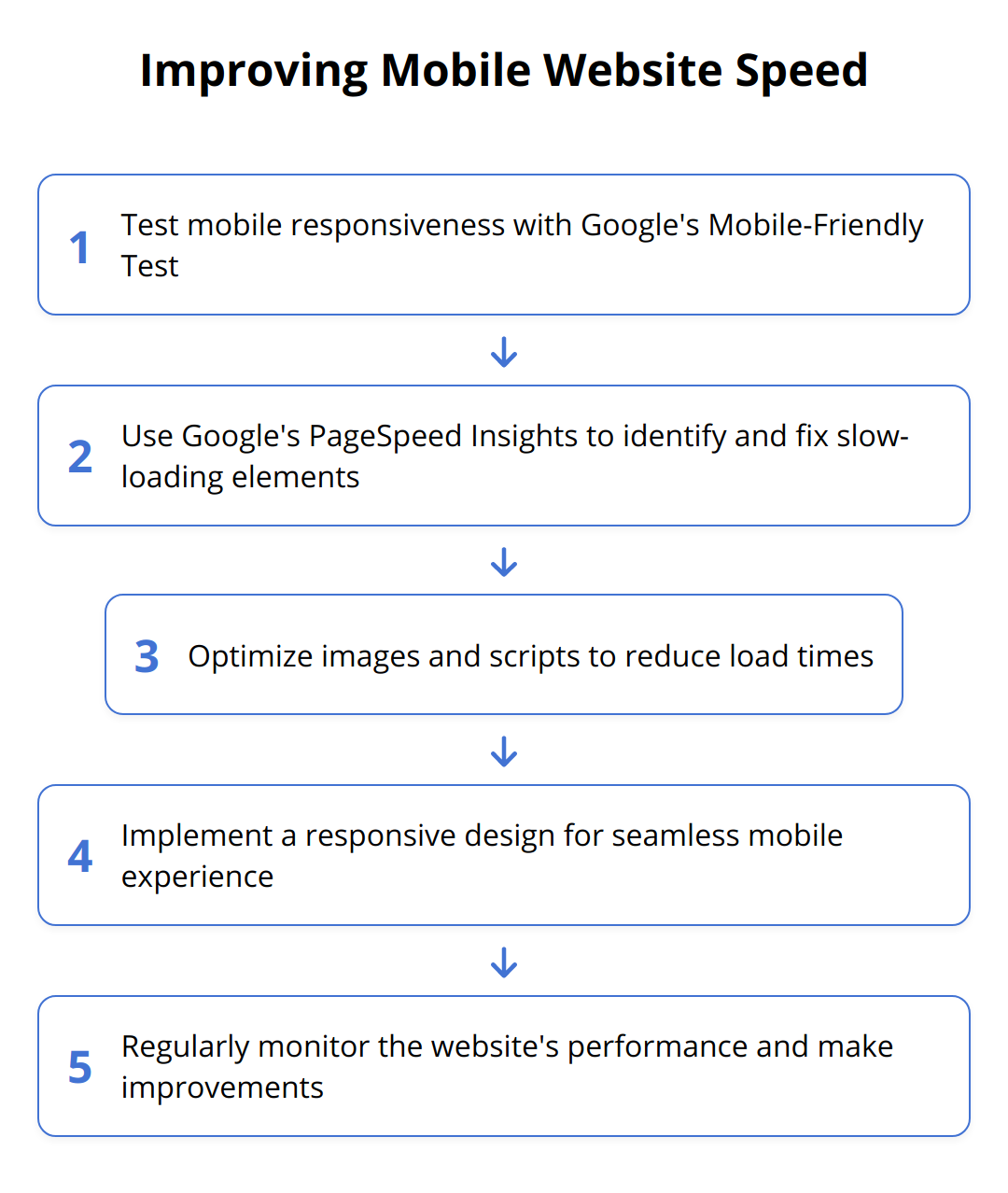Voice search is swiftly transforming the SEO landscape, creating new challenges and opportunities for website optimization. We at Emplibot understand the necessity of keeping pace with this advancement.
Incorporating voice search into your SEO strategy is no longer optional, as more users are turning to voice-activated devices for their search queries. Here’s a guide to help you adapt your content and technical SEO to harness the power of voice search effectively.
Why is Voice Search Vital for SEO?
Voice search is surging, with a significant percentage of online searches now initiated through voice-activated devices. The ease and convenience of speaking rather than typing have naturally increased the number of people using voice to find what they need online. This shift heavily influences SEO strategies because voice search behavior is different from traditional text search.

Voice Search Usage: Statistics reveal that voice-based shopping could jump to a staggering $40 billion by 2022. The adoption rate of voice search is especially high among younger audiences, with a notable number of millennials using voice search daily.

Voice vs. Traditional Search: Voice search queries are conversational and more likely to reflect natural speech patterns. This means ranking for keywords is no longer simply about identifying short, exact phrases. Instead, it’s about understanding the intent behind search queries, which are often phrased as full questions.
SEO Impact: Voice search isn’t just about getting your content to appear in search results; it’s about being the single best answer to users’ questions. Techniques that improve your odds include focusing on long-tail keywords and ensuring your content directly answers questions related to your niche. Additionally, local businesses can see a boost in foot traffic by optimizing for “near me” searches that are common with voice queries.
Now, let’s get practical with steps you can take to refine your SEO for the voice search era:
-
Optimize for Featured Snippets: Many voice search responses come from featured snippets. Aim to provide clear, concise answers to common questions in your content.
-
Focus on Natural Language: Write content as you speak, using a conversational tone that mimics how someone would phrase a question vocally.
-
Improve Local SEO: Claim and update your Google Business Profile, ensuring all details are accurate, to improve local voice search visibility.
-
Tailor Content to Questions: Include question and answer format sections, like FAQs, which align with voice search queries.
By addressing these areas, you’re better positioned to tap into the growing trend of voice search, which shows no sign of slowing down. The focus now should not only be on what users are searching for but also on how they’re conducting these searches. Voice search readiness is a competitive advantage you cannot afford to overlook.
Refining SEO for Voice Queries
Optimizing content for the nuanced requirements of voice search is essential in today’s SEO game. The trick lies in crafting content that sounds natural when spoken aloud. Your aim should be to match the conversational flow that defines voice-based queries. It’s about anticipating the questions users will ask and providing them with the best possible answers.
Speak Their Language: Users tend to use full sentences or specific questions when performing a voice search. It’s a good strategy to incorporate these conversational phrases into your headings and body text. Think about the types of questions your target audience might ask aloud and weave answers into your content naturally.

Winning with Featured Snippets: Securing a spot in the coveted featured snippet can give you a direct line to voice search users. These snippets often feed directly into voice search results, providing a concise answer to users’ queries. To get here, format your content to directly and succinctly answer potential questions. For more insights into mastering this craft, read about improving for featured snippets.
Question-Driven Content Structure: FAQs are a goldmine for voice search—users ask questions, and your FAQ section directly answers them. This straightforward Q&A format resonates well with voice search algorithms and user intent alike. Make sure to keep your answers to the point, prioritizing clarity and precision.

Tips for Voice Search Content Optimization:
-
Experiment by asking voice assistants questions relevant to your niche and observe the form of top answers.
-
Review your content out loud; if it sounds awkward, it’s likely not voice search-friendly.
-
Include conversational long-tail keywords that mirror how people actually talk.
-
Regularly update your content to answer the latest questions and concerns in your field.
By honing these strategies, content creators can ensure their material is primed for not just search engine algorithms, but the actual spoken inquiries of their audience. Remember, voice search SEO isn’t just about being seen—it’s about being heard in the right way.
Mobile and Speed Optimization
Optimizing your website for mobile devices is a make-or-break factor in voice search SEO. Users on mobile devices are the frontline of voice search, wanting quick, accurate results while on the go. A website that isn’t mobile-friendly will simply not suffice. Google’s Mobile-First Indexing is a clear signal that mobile responsiveness is mandatory. Here are practical ways to ensure your site is up to scratch.
First, test your website’s mobile responsiveness using tools like Google’s Mobile-Friendly Test. The results can highlight areas for improvement and even pinpoint exact issues to fix. Sites that offer a seamless mobile experience have higher chances of ranking well in voice search queries, as they cater to the needs of voice searchers today.
Website speed is another critical aspect. Page load time directly affects bounce rates – as load time goes from one to five seconds, the probability of bounce increases by 90%. To keep your voice search SEO impactful, your website’s loading speed should be lightning-fast. Google’s PageSpeed Insights is an invaluable resource for identifying what’s slowing your site down and how to turbocharge its performance.
Moreover, voice search results favor websites that load quickly because they can answer users’ questions without delay. No one will wait around for a slow site to load when they’re asking their voice assistant for fast answers.

Schema Markup for Voice Clarity
Schema markup is like the secret ingredient that makes your content more understandable for search engines—and it’s no less effective for voice search. When your content is marked up with schema, you’re giving search engines clear signals about the context of your information. Here’s why schema is non-negotiable for voice search SEO success:
-
It helps search engines grasp the specifics of your content, which can then be matched with relevant voice search queries.
-
Using schema markup can improve the chances of your content being used for featured snippets, a prime source for voice search answers.
-
Structuring data in a way that search engines can interpret with accuracy is paramount when you want to stand out in voice search results.
Implementing schema might seem daunting, but there are plenty of tools and plugins that can ease the process, especially for those using CMSs like WordPress. Google’s Structured Data Markup Helper can also guide you through the process.
Taking action on these fronts will keep you ahead in the voice search SEO game. Mobile optimization, faster loading times, and clear schema markup are non-negotiables if you’re serious about harnessing the power of voice search. With these elements nailed down, your website’s content has a fighting chance at being the first—and best—answer that voice searchers receive.
Final Thoughts
Adapting to voice search trends isn’t just a choice anymore; it’s a necessity. The sweeping wave of voice search popularity demands that SEO strategies evolve in unison with technological advances. For businesses to thrive online, integrating conversational search queries into their SEO efforts has become essential. It calls for a keen eye on natural language use, local search optimization, and ensuring that websites can quickly deliver the answers users seek.
![Key Takeaways - Voice Search SEO Strategies [Guide]](https://wp.emplibot.com/wp-content/uploads/2024/01/Voice-Search-SEO-Strategies-Guide-6-2024-01-22-071052.8882780000.png)
Voice search is not a static phenomenon; it’s a dynamic field that will continue to grow and shift in ways we must keep up with to remain relevant and successful. Embedding voice search into your overall SEO strategy isn’t merely about staying ahead of competitors. It’s about meeting your audience where they are and in how they choose to search.
We at Emplibot recognize the utmost importance of staying on top of voice search developments. With voice queries becoming more commonplace, you have the potential to increase your reach and engage with your audience in new and meaningful ways. Monitoring the trends isn’t just advisable— it’s integral to the DNA of a forward-thinking SEO strategy.
As you navigate the evolving landscape of SEO and voice search, consider partnering with tools that streamline and enhance your digital presence. With Emplibot, you can build your blog 100% automatically, publishing SEO-friendly articles that include all essentials from keyword research to internal linking. Emplibot can help add velocity to your content marketing efforts, allowing you to focus on other strategic areas of your business.
In conclusion, voice search SEO is more than a trend; it is the future of digital interactions. Businesses that are quick to adapt and align with this evolution stand to benefit greatly. As we progress in this exciting digital era, your ability to listen to your audience—and respond with clarity and relevance—will define your online success.
Enhance your voice search SEO with Emplibot’s automation.
![Voice Search SEO Strategies [Guide]](https://wp.emplibot.com/wp-content/uploads/2024/01/Voice-Search-SEO-Strategies-Guide-2024-01-22-071057.4122210000.png)
